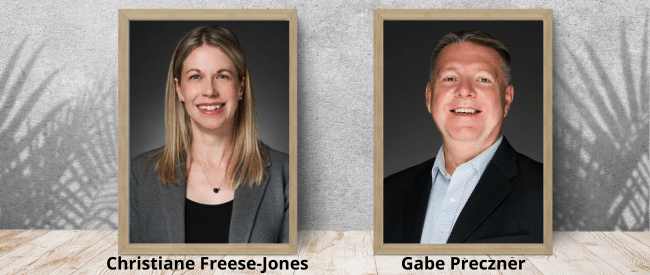Patient statements may be the most overlooked touchpoint in the patient experience. Effective, well-thought-out billing statements can positively affect patient satisfaction and significantly influence the financial outcomes of healthcare providers. But medical bills full of medical jargon and perplexing charges can quickly erode trust, delay payments and add significant strain on patient billing representatives.
Nearly 70% of consumers find medical bills confusing, according to InstaMed’s 2025 Trends in Healthcare Payments Annual Report. This lack of clarity doesn’t just frustrate; it actively deters. The provider collection rate for balances owed by patients with commercial insurance (self-pay after insurance) fell to 34% in 2024, according to Kodiak Solutions. Add to that, more than half of bad debt write-offs, 55%, are linked to insured patients.
Patient statements should represent a vital linking of financial transparency, operational efficiency, and, crucially, patient satisfaction. The solution lies in embracing personalization, made fast, easy and automated with advanced customer communication management (CCM) platforms and HIPAA-compliant printing and mailing services.
The power of personalization
Picture a patient statement that speaks directly to the individual, outlining their specific services in plain language, clearly distinguishing between insurance payments and their remaining responsibility, and prominently displaying tailored payment options. This is the promise of personalized patient statements.
Effective personalized statements go beyond simply inserting a patient’s name. They reflect the individual’s unique needs and preferences, incorporating:
- Simplified language and design. Replacing difficult medical and insurance terminology with easy-to-understand descriptions and design that complements the content.
- Transparent cost breakdown. Providing a clear, itemized list of services, how insurance was applied, and the exact amount the patient owes.
- Relevant information. Presenting only the information pertinent to their visit, avoiding overwhelming the patient with extraneous details.
- Tailored payment pathways. Highlighting important payment options including online portals, payment plans and financial assistance programs that align with the patient’s known preferences or financial situation.
- Billing and payment preferences. Reaching patients through their preferred channels, even when their requirements change.
The benefits are substantial. When patients understand their bills, they are more likely to pay promptly, which reduces accounts receivable (A/R) days and improves cash flow. Billing inquiries by phone decrease, freeing up staff to manage more complex calls. Most importantly, a positive financial experience fosters patient engagement and trust, strengthening the overall patient-provider relationship.
Leveraging CCM platforms
Achieving this level of personalization requires leading-edge technology for statement development and delivery. This is where cloud-based customer communication management platforms and patient statement printing and mailing services become indispensable to revenue cycle management companies and providers.
A CCM platform acts as the control center for all patient financial communications. Business users easily create and manage customized bills and other communications, not just for print and mail but also for email and text messaging. These platforms facilitate:
- Uniform integration. Working in tandem with your existing systems and software, a single platform for print and digital communications reduces the complexity of managing multiple systems for each delivery channel and ensures seamless data exchange.
- Dynamic content. Using templates that automatically populate with personalized information based on patient demographics, service types, and payment history.
- Omnichannel delivery. Offering patients the choice of receiving statements via traditional mail, email, secure patient portals, or even text notifications, to align with their preferences. ACI Speedpay Pulse research for the first half of 2025 found most consumers preferred digital or a combination of digital and print and mail statement delivery:
- Digital 57%
- Paper 16%
- Both digital and paper 27%
- Analytics and reporting. Providing insights into communication effectiveness with tracking, reporting and archiving capabilities.
While preference for digital communication is growing, patient statement printing and mailing remain crucial components of the healthcare experience, particularly for specific demographics. Outsourcing these services to industry-leading print and mail providers offers significant advantages:
- Cost efficiency. Maximizing economies of scale for paper, envelopes and postage, often resulting in lower per-unit costs than in-house operations.
- Expertise and compliance. Specialized print and mail professionals maintain up-to-date security protocols, including HIPAA compliance and SOC 2 Type II certification, ensuring secure and compliant delivery of sensitive patient information.
- Scalability. The ability to efficiently handle fluctuating volumes of statements without the burden of maintaining in-house equipment or staffing.
- Quality and accuracy. High-speed, roll-fed printers enable dynamic variable color and personalization for patient statement printing and mailing. Ensuring high-quality print production and meticulous attention to detail reinforces healthcare providers’ image and reduces errors.
The future of patient financial communication
The healthcare industry is experiencing a necessary evolution in its approach to patient financial communication. Organizations that prioritize clarity, convenience, and connection in their billing statements are not just improving their bottom line. They are forging strong patient relationships that ultimately builds a stronger, more resilient revenue cycle.
By leveraging the capabilities of CCM platforms and expert patient statement printing and mailing services, RCM firms and healthcare providers can transform a historical source of friction into an opportunity for improved communication and enduring patient loyalty.
Please contact us for more information about healthcare communications with HIPAA-compliant patient statement printing and mailing services.







